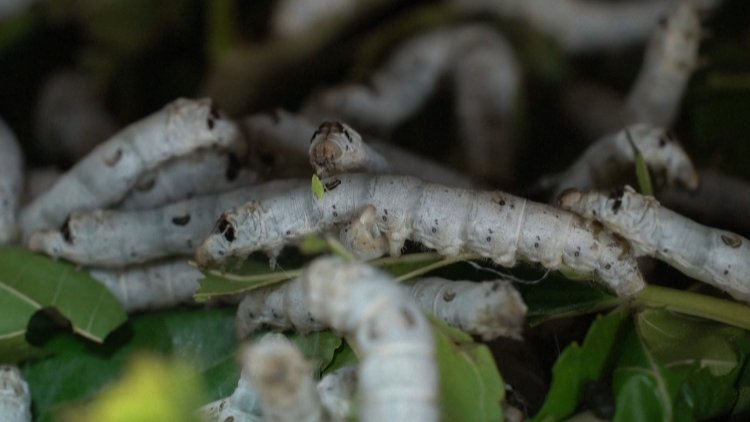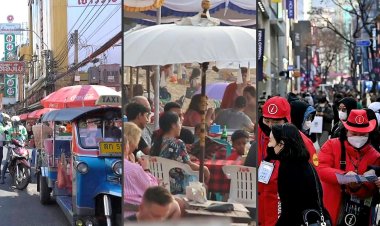Silkworm cat grub smells like success

Licking its lips imperiously, a ginger cat mops up every last morsel of food from its curly whiskers, clearly undaunted by its supper's rather unusual base ingredient -- silkworm pupae.
The 15 feline residents of the Mao Thai Thai cat cafe in Taiwan are among volunteer taste testers sampling a new cat food developed by silkworm experts.
As well as making use of what was previously just a byproduct of silk production, the scientists say the food eliminates harmful intestinal bacteria -- with the added bonus of reducing the odour of the cats' own byproducts.
"They have more energy and less smelly faeces, which is more than I expected," says the cafe's manager Rosa Su.
The food comes in various normal-sounding flavours -- tuna and milkfish, beef and chicken -- but the main protein component of the
pink gloop is insect.
That doesn't seem to bother Su's cats, who clamour around her, impatient for their dinner.
The research team says much of the feedback from other owners involved in the trial has been positive too.
At the century-old Miaoli Agricultural Research and Extension Station, where the food was created, hundreds of caterpillars wriggle around in trays as they munch on mulberry leaves.
The facility houses 136 different silkworm varieties from all over the world.
The pupa is the intermediate stage in their lifecycles, when they form cocoons to transition from larva to adult.
"When we see silkworms, we think of silk fabrics," researcher Liao Chiu-hsun tells as she carefully slices the top off a silk cocoon to extract a squirming brown grub.
"But these highly domesticated insects have a lot more to offer."
The pupae are already rich in protein, fat and minerals, but the Miaoli team has also developed a technique to boost their content of immune proteins that kill harmful bacteria inside the host.
Stressing the silkworms and making them think they are in danger means they produce more of these proteins in the cocoon, after which they are harvested and turned into cat food.















